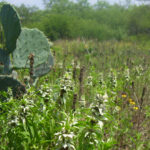As the scorching summer heat begins to wane, September ushers in a new season of opportunity for gardeners in South Central Texas. The slightly milder temperatures and shorter days make this month the perfect time to transition your garden from a summer scorched-earth policy to a lush, productive fall oasis. Whether you’re a seasoned green thumb or a novice, here is a comprehensive guide to the essential gardening activities you should tackle this September.
Preparing the Soil
The foundation of any successful garden is healthy soil. Before you plant a single seed or transplant, take the time to prepare your garden beds.
- Remove Debris: Clear out any remaining plant material from your summer garden, as old plants can harbor pests and diseases. While it may be tempting to compost this material, it’s best to discard any diseased plants to prevent contamination.
- Amend and Fertilize: Replenish your soil’s nutrients by adding a 2-3 inch layer of compost and mixing it in. You can also incorporate a slow-release granular fertilizer, such as an 8-2-4 or similar ratio, to provide a steady supply of nutrients for your new plants. For new garden beds, consider the hugelkultur method, which involves layering logs, sticks, leaves, and other organic matter to improve soil health and retain moisture over time.
- Water Wisely: After amending the soil, water the beds thoroughly to help the new amendments settle and to prepare the ground for planting.
Planting Your Fall Vegetable Garden
September is prime time for planting a variety of cool-season vegetables and herbs. Many gardeners find the fall season in Central Texas to be even more productive than spring due to less intense heat and fewer pests.
- Leafy Greens and Root Crops: Direct-sow seeds for lettuce, spinach, kale, Swiss chard, carrots, beets, and radishes directly into your garden beds. These crops thrive in cooler temperatures and often develop a sweeter flavor as the nights get chillier. To ensure a continuous harvest, plant a new batch of seeds every few weeks.
- Brassicas: Start transplants for broccoli, cabbage, cauliflower, and Brussels sprouts now. While these plants prefer cooler weather, planting them in September allows them to establish a strong root system before the colder months arrive.
- Herbs: Plant perennial herbs like rosemary, thyme, and oregano. You can also sow seeds for cilantro, dill, and parsley.
- Warm-Weather Crops: If you want a late-season harvest of warm-weather favorites like tomatoes, peppers, and squash, you can plant heat-tolerant varieties from transplants. Make sure to get these in the ground early in the month so they have enough time to mature before the first frost.
Landscaping and Lawn Care
Don’t neglect your ornamental plants and lawn during this transition.
- Pruning and Dividing: Lightly prune roses and other perennials early in the month to encourage a final flush of fall blooms. September is also an ideal time to divide and transplant spring-blooming perennials such as iris, daylilies, and cannas. This helps to revitalize the plants and gives you more to spread around your garden or share with friends.
- Planting: Fall is the best time to plant new trees, shrubs, and perennials in South Central Texas. The milder temperatures allow their roots to establish themselves before the intense heat of next summer. Consider planting native or drought-tolerant plants like Texas sage, Mexican bush sage, and ornamental grasses.
- Lawn Maintenance: September’s cooling temperatures can make your lawn susceptible to fungal diseases like brown patch, particularly in St. Augustine grass. To prevent this, avoid watering at night. You can also apply a thin layer of compost or cornmeal to help treat existing brown patch. Continue to mow your lawn, but keep the blades high to help shade out weeds.
Additional Tasks
- Pest Control: Keep an eye out for pests like fall webworms. You can puncture their webs with a broom handle to allow natural predators to take care of them, or if necessary, use a safe insecticide like Bacillus thuringiensis (Bt).
- Composting: As you clean up your garden, start a new compost pile with the fallen leaves and other organic matter. This will create rich compost for next season’s gardening endeavors.
- Bulbs and Wildflowers: Although you’ll plant them later in the fall (usually in November), September is a great time to select and purchase your wildflower seeds and perennial bulbs.
By following this checklist, you can ensure a smooth transition from summer to fall and enjoy a bountiful and beautiful garden throughout the season.




